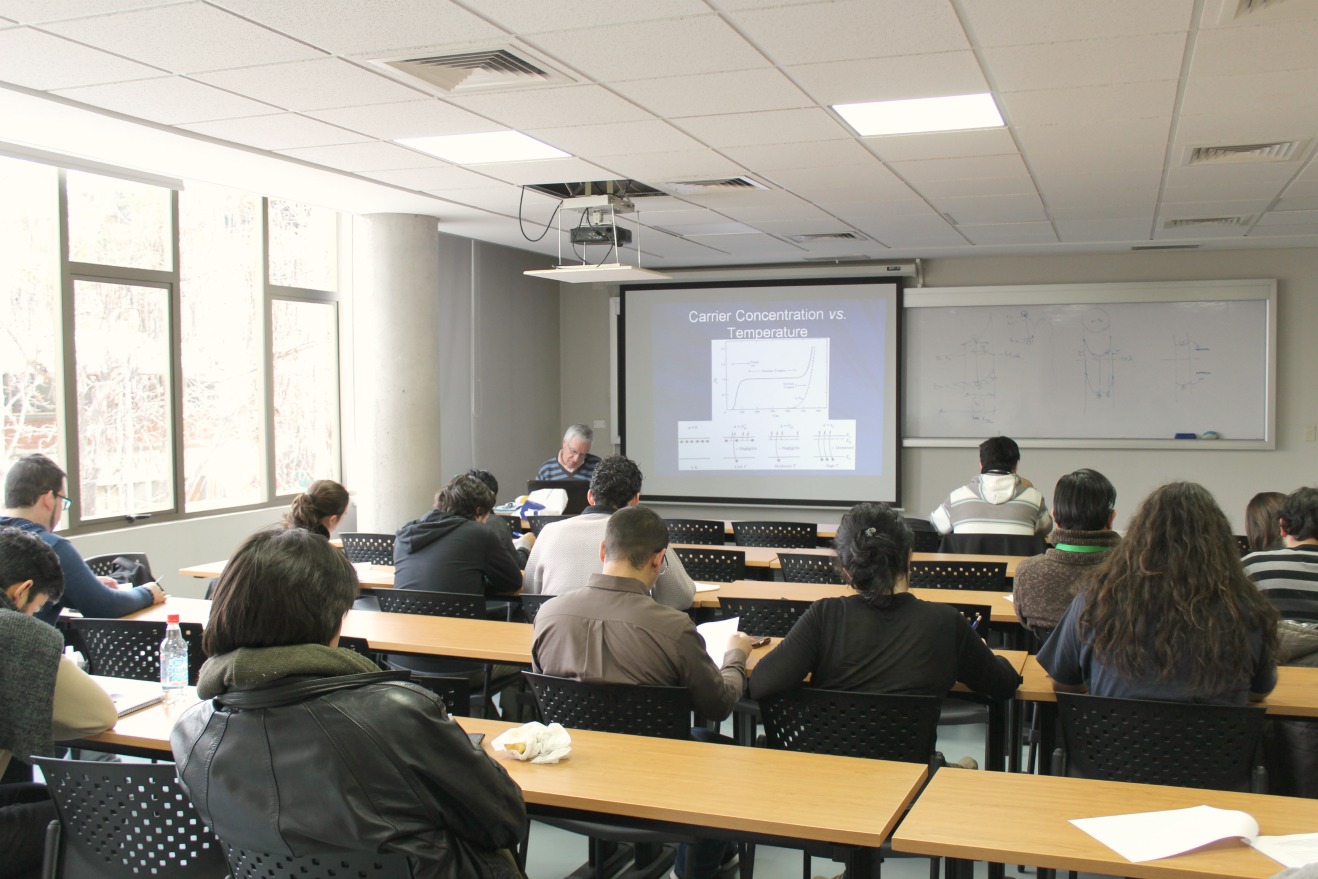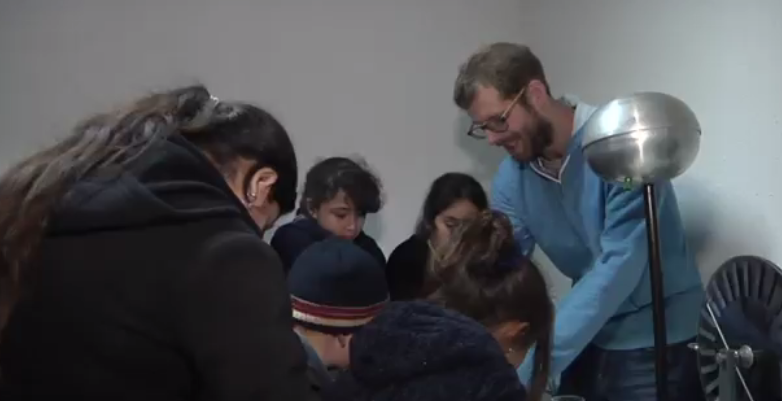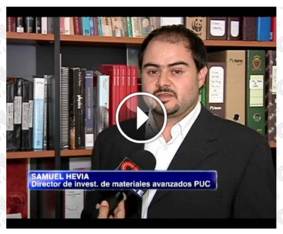News

Administrative Terms for the Acquisition of an X-Ray Photoelectron Spectroscopy (XPS)
Download here (Spanish)

V National Congress of Nanotechnology 2018 Pucón, Chile
Continue reading...
To access the official web site (in Spanish), click HERE.

CIEN-UC celebrated the inauguration of an equipment for analysis and characterization of materials unique in Chile
Continue reading...
To read the whole piece of news (In Spanich), click HERE.

Research job offer with credits on the undergraduate program curriculum
Continue reading...
An opportunity has risen to do undergraduate research in order to prepare, on a weekly basis, a print run of news related to Nanotechnology. Applicants must be enthusiastic about sciences, specially about Nanotechnology, he/she must have good Spanish writing skills and be willing to study the researches of CIEN-UC thoroughly.
In case of having interest, contact Professor César Sáez to csaez@ing.puc.cl
To read this and other publications, click
HERE

High attendance marks the end of the course given by Professor Enrique Dalchiele.
Continue reading ...
Students from UC and other Universities took part in the course called 'Fundamentos de la electroquímica y fotoelectroquímica: estudio de la unión semiconductor-electrolito', which was carried out from July the 26th to the 28th and which was organized by CIEN-UC.
Professor Enrique Dalchiele, who travelled from Universidad de la República de Uruguay, looked happy with the attendance to his course on electrolytes and semiconductors which was aimed to show the usefulness of such combination when converting solar power into electricity.
This course was aimed at postgraduate students of Physics, Chemistry and other disciplines and it lasted three days in which different topics were addressed: charge transfer mechanism between a semiconductor electrode and an electrolyte under light and dark conditions; applications of nanostructured materials in the field of photoelectrochemistry;study of photoelectrochemical devices for the energy conversion and storage; experimental techniques in photoelectrochemistry.
Professor Dalchiele explains that the interesting fact of courses like this is that "when someone addresses this area there is an element of the Solid-state physics with relation to the semiconductor and an electrochemistry element with relation to the electrolyte. Both things come together and it emerges a topic which is on the borderline of two disciplines."
Added to this is the excellent convocation which resulted in more than twenty students, many of whom come from other Universities and the possibility to do a new version of the course. "This is addressed at macro level and it can be extrapolated if someone wants to work at a nanometric level, where concepts change due to the size reduction, which is why we are thinking of giving a second part of the course which will be focused on nanomaterials."
The course "Fundamentos de la electroquímica de semiconductores y fotoelectroquímica: estudio de la unión semiconductor-electrolito", was organized by the Research Center for Nanotechnology and Advanced Materials (CIEN-UC).

.jpg)
.jpg)

Postgraduate students from the Physics Institute of Pontificia Universidad Católica de Chile undertake an internship at Centro Científico Estudiantil.
Continue reading...
Under the terms of a collaboration agreement between Centro Científico Estudiantil of La Pintana and the Research Center for Nanotechnology and Advanced Materials of Pontificia Universidad Católica de Chile, two Postgraduate students arrived in this district to undertake an internship. HERE ONE PICTURE OF THE ACTIVITY


"Nano-óptica: escala visual de una realidad multidisciplinaria", this is the name of the project that involves academics of CIEN-UC and School of Arts of Pontificia Universidad de Chile.
Continue reading...
Ten academics of Universidad Católica (Faculties of Physics, Engineering, Chemistry and School of Arts), will be involved, for the first time, in the project called "Nano-óptica: escala visual de una realidad multidisciplinaria", which is an interesting proposal whose aim is to contribute to the creation of artistic works produced by the interchange of disciplines related to Nanotechnology and Art.
To read the whole piece of news (in Spanish), click here HERE.

Members of the research center CIEN-UC published an article in a very important journal
Continue Reading...
The Researcher María José Retamal, who is pursuing her postdoctorate at the research center CIEN-UC, received in January 2016 the approval from the Committee of the Biomacromolecules journal to publish the article called "Surface morphology of vapor-deposited chitosan: evidence of solid-state dewetting during the formation of biopolymer films."
To read the piece of news (in Spanish), click HERE.

Bases administrativas y técnicas de la licitación para la compra de un microscopio eletrónico de barrido con cátodo de emisión de campo (FE-SEM)
Download here

CIEN-UC y SG ISO Chile entered into a Strategic Alliance Contract
Continue Reading...
Last April 9th, CIEN-UC entered into a Strategic Alliance Contract withSG ISO Chile, consulting firm specialized in the implementation of control systems and sustainability in standard ISO.
Under this agreement, investigators of CIEN-UC will give support to the solution of problems which clients of SG ISO Chile have to deal with in different topics, but mainly, in the field of energetic efficiency.
Such document was signed by Max Bañados, Chairman of the CIEN-UC Board and Dean of Physics Faculty; José Mejía López, CIEN-UC Director and Alberto Alonso de la Fuente, SG ISO Chile General Manager.

Japanese scientists receive Nobel Prize in Physics for inventing LED lights
Continue Reading...
The japanese scientists Isamu Akasaki, Hiroshi Amano and Shuji Nakamura received Nobel Prize in Physics 2014 last October 7. They were recognized for inventing diodes that emit blue LED lights. This discovery helped to create a new energy source capable to emit more efficient and environmentally friendly white light.

Dr. Samuel Hevia, Research Director from CIEN-UC, was interviewed on this topic by CNN Chile. Dr. Hevia said: “we normally use white light, not only red and green. As an example, to illuminate a room is better white light. If we get red, green and blue, the eyes could see white light ”.
To see the whole interview published in CNN Chile click HERE.

home




.jpg)
.jpg)

